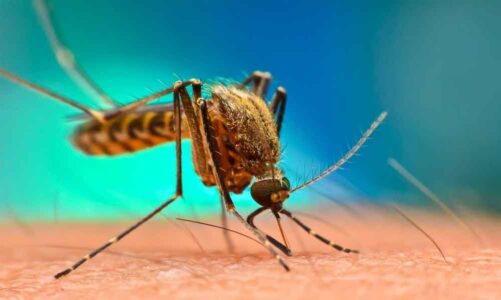Key Takeaways:
- Children can experience orthopedic conditions that impact their development and quality of life.
- Common pediatric orthopedic conditions include scoliosis, clubfoot, hip dysplasia, and sports-related injuries.
- Recognizing early symptoms of orthopedic conditions is crucial for timely intervention.
- Early diagnosis and treatment are important for long-term outcomes.
- Pediatric orthopedic specialists offer advanced treatment techniques, such as minimally invasive surgery and innovative rehabilitation.
- Non-surgical treatment options include physical therapy, bracing, medication, and lifestyle modifications.
- Surgical interventions may be necessary for certain conditions.
- Rehabilitation and follow-up care are essential for recovery and continued monitoring.
- Parents can promote healthy bone and joint health through nutrition, physical activity, and ergonomic practices.
- Encouraging age-appropriate physical activity and sports participation can enhance overall fitness.
- Creating a safe environment and teaching proper body mechanics can prevent orthopedic injuries.
1. Understanding Pediatric Orthopedic Conditions
The Impact of Pediatric Orthopedic Conditions on Children
When it comes to the musculoskeletal system, children are not exempt from experiencing orthopedic conditions. Pediatric orthopedic conditions can have a significant impact on a child’s development, mobility, and overall quality of life. These conditions can affect bones, joints, muscles, and ligaments, resulting in pain, limited movement, and in some cases, permanent deformities if left untreated.
It is important to recognize and address these conditions early on to ensure proper growth and development. Pediatric orthopedic conditions can interfere with a child’s ability to participate in physical activities, sports, and even hinder their everyday activities, such as walking or interacting with others.
The Most Common Pediatric Orthopedic Conditions
There are several common pediatric orthopedic conditions that parents should be aware of. One such condition is scoliosis, which is an abnormal curvature of the spine. This condition can develop during adolescence and can lead to pain, breathing difficulties, and aesthetic concerns if left untreated.
Another common pediatric orthopedic condition is clubfoot, which is a deformity of the foot and ankle. Clubfoot can cause the foot to turn inward, making it difficult for the child to walk properly. Treatment is essential to correct the deformity and allow for normal foot function.
Other common pediatric orthopedic conditions include hip dysplasia, limb length discrepancies, growth plate fractures, and sports-related injuries, such as ACL tears and stress fractures.
Recognizing the Symptoms of Pediatric Orthopedic Conditions
Recognizing the symptoms of pediatric orthopedic conditions early on is crucial for timely intervention and treatment. Parents should pay attention to signs such as persistent pain in the joints or muscles, difficulty walking or running, limited range of motion, swelling or tenderness around the affected area, and changes in gait or posture.
If a child complains of pain or discomfort that persists or worsens over time, it is important to consult a pediatric orthopedic specialist for a thorough evaluation and diagnosis.
2. Expert Insights on Pediatric Orthopedic Care
The Importance of Early Diagnosis and Treatment
Early diagnosis and treatment of pediatric orthopedic conditions can significantly impact long-term outcomes for children. When these conditions are identified and addressed promptly, interventions can be implemented to correct the issues and prevent further complications.
Pediatric orthopedic specialists are trained to recognize the unique needs of growing children and provide tailored treatment plans. They understand the complexities of pediatric bone and joint development and can offer targeted interventions that promote healthy growth and development.
What to Expect During a Pediatric Orthopedic Evaluation
During a pediatric orthopedic evaluation, a specialist will conduct a thorough physical examination and may order additional diagnostic tests such as X-rays, MRI scans, or blood work to aid in the diagnosis. The specialist will evaluate the child’s medical history, family history, and any symptoms present to determine the appropriate course of action.
Parents can expect the specialist to explain the diagnosis in detail, discuss treatment options, and address any concerns they may have. The specialist will work closely with the child and their family to develop a personalized treatment plan that considers the child’s unique needs and goals.
Advances in Pediatric Orthopedic Treatment Techniques
Advances in pediatric orthopedic treatment techniques have revolutionized the field and have greatly improved outcomes for children with orthopedic conditions. These advancements include minimally invasive surgical procedures, advanced imaging technologies for precise diagnosis, and innovative rehabilitation techniques.
Minimally invasive surgical techniques allow for smaller incisions, reduced scarring, and faster recovery times. They have been particularly beneficial for conditions such as scoliosis, where the traditional open surgery was more invasive and required longer hospital stays.
Advances in imaging technologies, such as MRI and 3D modeling, provide orthopedic specialists with detailed views of a child’s musculoskeletal system, allowing for more accurate diagnoses and treatment planning.
Rehabilitation techniques have also improved, with specialized programs designed to meet the unique needs of children with orthopedic conditions. Physical therapy, occupational therapy, and various assistive devices can help children regain mobility, strength, and independence.
3. Treatment Options for Pediatric Orthopedic Conditions
Non-surgical Treatment Approaches for Pediatric Orthopedic Conditions
Non-surgical treatment approaches are the first line of defense for many pediatric orthopedic conditions. These approaches may include physical therapy, bracing or casting, medication, and lifestyle modifications.
Physical therapy plays a crucial role in strengthening muscles, improving range of motion, and enhancing overall function. Therapists use various techniques and exercises tailored to the child’s specific condition to promote healing and recovery.
Bracing or casting is often used for conditions such as clubfoot or scoliosis to encourage proper alignment and correct deformities gradually. Medications, such as anti-inflammatory drugs or pain relievers, may be prescribed to manage symptoms and promote comfort.
Lifestyle modifications, such as weight management and activity modifications, can also play a significant role in managing and preventing pediatric orthopedic conditions. Maintaining a healthy weight reduces stress on joints and bones, while modifications in physical activity can help prevent injuries.
Surgical Treatment Options for Pediatric Orthopedic Conditions
In some cases, surgical intervention may be necessary to correct pediatric orthopedic conditions. Surgery may be recommended for conditions such as clubfoot, hip dysplasia, or severe scoliosis that have not responded adequately to non-surgical interventions.
Pediatric orthopedic surgeons utilize advanced surgical techniques to address the unique needs of growing children. These procedures aim to correct deformities, restore function, and promote healthy growth.
Common surgical procedures for pediatric orthopedic conditions include osteotomy (bone realignment), tendon lengthening or transfers, joint reconstruction or replacement, and spinal fusion for severe spinal deformities.
Post-treatment Rehabilitation and Follow-up Care
Rehabilitation and follow-up care are critical components of the treatment journey for children with orthopedic conditions. After surgery or non-surgical treatment, a child will typically undergo a comprehensive rehabilitation program to optimize healing, restore function, and prevent recurrent issues.
Rehabilitation may include physical therapy, occupational therapy, and ongoing monitoring by the pediatric orthopedic specialist. The specialist will closely monitor the child’s progress and make any necessary adjustments to the treatment plan.
Regular follow-up appointments will be scheduled to ensure the child’s continued growth and development are on track. The specialist will provide guidance on long-term care, pain management, and any necessary lifestyle modifications to support the child’s orthopedic health.
4. Promoting Healthy Growth and Development in Children
Tips for Maintaining Optimal Bone and Joint Health in Children
Maintaining optimal bone and joint health in children is essential for their overall growth and development. Parents can promote healthy bone and joint health in their children by ensuring a balanced diet rich in calcium, vitamin D, and other essential nutrients.
Encouraging regular physical activity is also crucial for developing strong bones and muscles. Activities such as running, jumping, and playing sports help promote bone density and overall fitness.
It is equally important to limit sedentary activities, such as excessive screen time, that can contribute to musculoskeletal problems. Encouraging good posture and ergonomic practices can also help prevent issues such as back pain or poor spinal alignment.
Fostering Healthy Physical Activity and Sports Participation in Children
Physical activity and sports participation offer numerous benefits for children, including improved cardiovascular health, weight management, and enhanced coordination and motor skills. However, it is essential to ensure that children engage in activities that are appropriate for their age and skill level to reduce the risk of injuries.
Parents can encourage their children to participate in a variety of activities and sports, providing a well-rounded approach to physical fitness. It is important to emphasize the importance of warm-up exercises, proper technique, and the use of protective equipment to prevent injuries.
Preventing Pediatric Orthopedic Injuries and Complications
Preventing pediatric orthopedic injuries and complications starts with creating a safe environment for children. This includes ensuring appropriate childproofing measures are in place at home, supervising playtime, and providing adequate protective gear during sports and other physical activities.
Teaching children about proper body mechanics, such as bending at the knees when lifting heavy objects, can also help prevent injuries. Additionally, educating children about the importance of respecting their bodies and listening to any pain or discomfort can promote early recognition of potential orthopedic issues.
In conclusion, understanding pediatric orthopedic conditions, seeking expert insights, exploring treatment options, and promoting healthy growth and development are essential elements when it comes to providing optimal care for children. By being knowledgeable about these topics and taking proactive measures, parents can ensure the well-being of their child’s musculoskeletal health for a lifetime.
FAQ
Question: What are some common pediatric orthopedic conditions? Answer: Some common pediatric orthopedic conditions include scoliosis, clubfoot, hip dysplasia, and sports-related injuries like ACL tears and stress fractures.
Question: How can I recognize symptoms of pediatric orthopedic conditions? Answer: Look out for signs such as persistent pain in joints or muscles, difficulty walking or running, limited range of motion, swelling or tenderness, and changes in posture or gait.
Question: Why is early diagnosis and treatment important for pediatric orthopedic conditions? Answer: Early intervention can prevent further complications and promote healthy growth and development in children with orthopedic conditions.
Question: What can I expect during a pediatric orthopedic evaluation? Answer: A specialist will conduct a physical examination and may order additional tests to aid in diagnosis. They will discuss the diagnosis, treatment options, and address any concerns.
Question: What advances have been made in pediatric orthopedic treatment? Answer: Advances include minimally invasive surgical procedures, advanced imaging technologies for precise diagnosis, and innovative rehabilitation techniques.
Question: What are some non-surgical treatment options for pediatric orthopedic conditions? Answer: Non-surgical approaches may include physical therapy, bracing or casting, medication, and lifestyle modifications like weight management and activity modifications.
Question: When is surgical intervention necessary for pediatric orthopedic conditions? Answer: Surgery may be recommended for conditions that have not responded to non-surgical interventions or for severe deformities like clubfoot or scoliosis.
Question: What is the importance of rehabilitation and follow-up care after treatment? Answer: Rehabilitation programs and follow-up care are essential for optimizing healing, restoring function, and monitoring a child’s continued growth and development.



